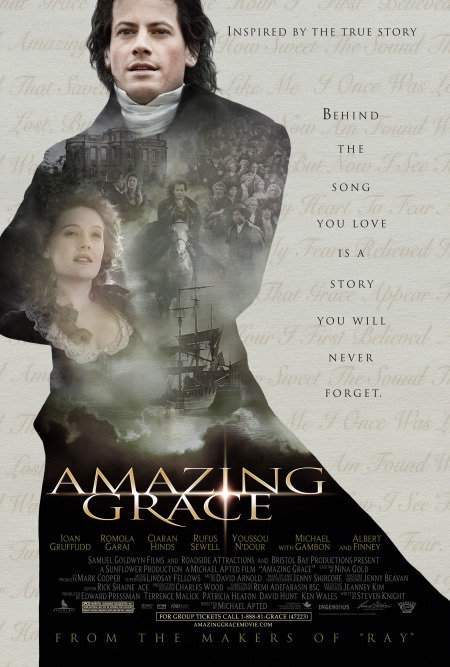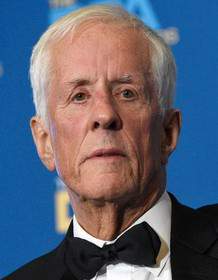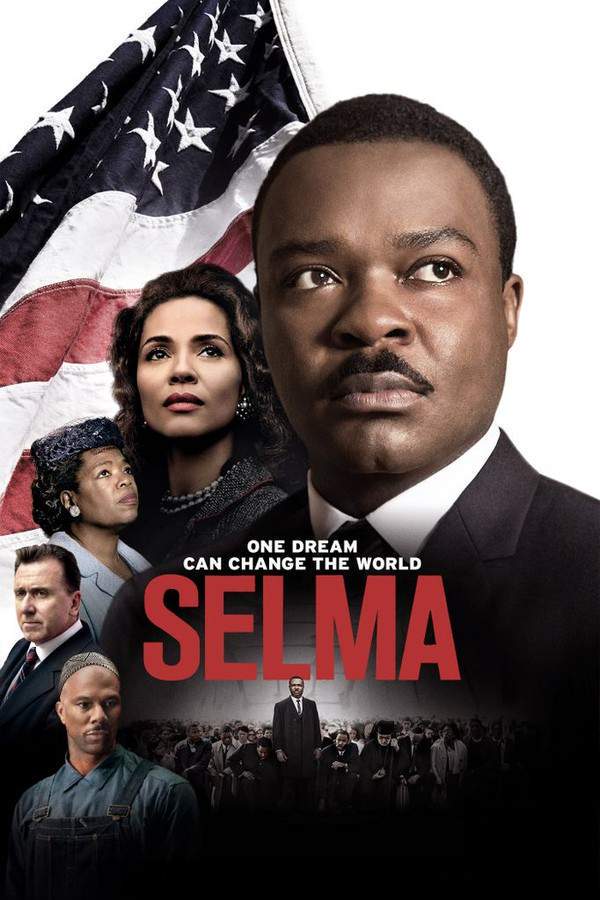
Amazing Grace 2007
Directed by

Michael Apted
Made by

Roadside Attractions
Test your knowledge of Amazing Grace with our quiz!
Amazing Grace Plot Summary
Read the complete plot summary and ending explained for Amazing Grace (2007). From turning points to emotional moments, uncover what really happened and why it matters.
The movie opens with Wilberforce, who is gravely ill, taking a respite in the tranquil setting of Bath, Somerset, accompanied by his cousin, Henry Thornton. It is here that he is introduced to his future spouse, Barbara Spooner. Initially reluctant to share his life’s story, Barbara encourages him to open up about his past. The film then transitions back 15 years to 1782, where we witness William as an ambitious and popular Member of Parliament. He is rallied by close friends, such as William Pitt, Thomas Clarkson, and Hannah More, to tackle the perilous issue of the British slave trade. This pivotal decision makes him a target of unpopularity among members of the House of Commons who have vested interests in maintaining the trade, particularly from cities like London, Bristol, and Liverpool.
Over time, the relentless struggle against such deep-rooted injustices takes a toll on William, culminating in a debilitating illness that is later revealed to be colitis, now more widely recognized as Crohn’s disease. This physical decline brings the narrative back to present-day, where William finds himself overwhelmed and contemplating a complete withdrawal from politics, feeling as though his efforts are in vain. However, Barbara stands firmly by his side, urging him to persevere, asserting that if he does not continue, no one else will champion this critical cause.
As days pass, William and Barbara wed, and with their union igniting renewed hope, William reenters the fray, reinvigorated and determined to continue the battle against the slave trade. Supported by loyal allies like Thornton, Clarkson, and James Stephen, William’s relentless pursuit unfolds over two decades. His efforts culminate in 1807 when he successfully guides a groundbreaking bill through Parliament that forever abolishes the slave trade within the British Empire. This emotional and historical journey captures the essence of bravery, love, and perseverance in the face of insurmountable odds.
Amazing Grace Timeline
Follow the complete movie timeline of Amazing Grace (2007) with every major event in chronological order. Great for understanding complex plots and story progression.
Wilberforce's Illness
The film opens with William Wilberforce suffering from a severe illness while taking a holiday in Bath, Somerset. Here, he is accompanied by his cousin, Henry Thornton, who provides support during this difficult time.
Meeting Barbara Spooner
During his stay in Bath, Wilberforce meets Barbara Spooner, who later becomes his wife. Although initially reluctant, he eventually opens up to her about his life, setting the stage for their future relationship.
Flashback to 1782
The narrative flashes back to 1782, where William Wilberforce reflects on his rise as a popular Member of Parliament. This sets the historical context for the struggles he will face regarding the British slave trade.
Taking on the Slave Trade
Encouraged by friends such as William Pitt, Thomas Clarkson, and Hannah More, Wilberforce decides to tackle the contentious issue of the British slave trade. His decision marks a significant turning point in his political career as he attempts to fight against this inhumane practice.
Facing Opposition
Wilberforce quickly becomes unpopular among his parliamentary colleagues who have vested interests in the slave trade. This backlash highlights the political dangers he faces as he pursues his mission for justice.
Physical and Emotional Toll
Exhausted from the conflict and feeling helpless, Wilberforce's health deteriorates. He falls victim to colitis, known today as Crohn’s disease, which forces him to confront the physical and emotional toll of his political battles.
Contemplating Leaving Politics
In a moment of despair, Wilberforce considers abandoning his political career. Frustrated by his inability to effect change, he feels isolated from both the government and his goals.
Barbara's Encouragement
Barbara Spooner plays a pivotal role in Wilberforce's life, encouraging him to continue his fight against the slave trade. She reminds him that he is uniquely capable of championing this cause, reigniting his determination.
Marriage
Soon after their meeting, Wilberforce and Barbara marry, marking a new chapter in their lives. This union not only provides him with emotional support but also renews his commitment to his cause.
Renewed Hope
Following his marriage, Wilberforce finds renewed hope and vigor to continue his fight against the slave trade. Alongside Barbara and his trusted allies, he reignites his political efforts.
Twenty Years of Struggles
Over the next two decades, Wilberforce tirelessly proposes legislation aimed at abolishing the slave trade. His perseverance through numerous setbacks is a testament to his commitment to justice and human rights.
Passing the Abolition Bill
After many trials and legislative challenges, Wilberforce finally achieves a significant victory. In 1807, he is instrumental in the passage of a bill that abolishes the slave trade throughout the British Empire, marking a historic triumph.
Legacy of Change
The successful abolition of the slave trade leaves a lasting legacy not only for Wilberforce but for society as a whole. His efforts inspire future generations to continue the fight for equality and justice.
Amazing Grace Characters
Explore all characters from Amazing Grace (2007). Get detailed profiles with their roles, arcs, and key relationships explained.
William Wilberforce
A passionate and determined Member of Parliament, Wilberforce is dedicated to the abolition of the slave trade. He faces significant opposition and challenges throughout his journey but remains resolute due to his moral convictions and the support of his friends. His character represents the struggle for justice and the importance of advocacy.
Barbara Spooner
Barbara is Wilberforce's devoted wife who plays a crucial role in encouraging him to continue his fight against the slave trade. Her support and belief in his cause provide him with renewed hope. She represents the kind of personal commitment that plays a vital role in activism.
Henry Thornton
Henry Thornton is Wilberforce's cousin and confidant who encourages him throughout his struggles. As a fellow abolitionist and parliamentarian, he provides crucial support and insight into the political arena, demonstrating the importance of alliances in social reform.
Amazing Grace Settings
Learn where and when Amazing Grace (2007) takes place. Explore the film’s settings, era, and how they shape the narrative.
Time period
1782-1807
The movie spans a significant period of British history, from 1782 to 1807, when the abolitionist movement began to gain traction. This era was marked by rising awareness of the moral issues surrounding the slave trade, ultimately leading to crucial legislation. It was a time of political turmoil and social reform, reshaping the future of the British Empire.
Location
Bath, Somerset, London, Bristol, Liverpool
Bath is a historic city in Somerset, known for its Roman baths and Georgian architecture. It serves as a backdrop for pivotal moments in William Wilberforce's life. Additionally, cities like London, Bristol, and Liverpool represent the economic interests tied to the British slave trade, making them significant locations in the struggle against this injustice.
Amazing Grace Themes
Discover the main themes in Amazing Grace (2007). Analyze the deeper meanings, emotional layers, and social commentary behind the film.
🕊️
Freedom
The central theme of the movie is the fight for freedom, particularly the abolition of the slave trade. William Wilberforce embodies the struggle against oppression and the moral obligation to champion human rights. His journey is a testament to perseverance in the face of adversity and the importance of social justice.
💔
Sacrifice
The theme of sacrifice is prevalent throughout the film, as Wilberforce faces personal and political challenges. He endures illness, unpopularity, and despair, all in pursuit of a righteous cause. His commitment to ending the slave trade requires him to put aside his own ambitions for the greater good.

Coming soon on iOS and Android
The Plot Explained Mobile App
From blockbusters to hidden gems — dive into movie stories anytime, anywhere. Save your favorites, discover plots faster, and never miss a twist again.
Sign up to be the first to know when we launch. Your email stays private — always.
Amazing Grace Spoiler-Free Summary
Discover the spoiler-free summary of Amazing Grace (2007). Get a concise overview without any spoilers.
In the summer of 1972, a modest brick building on the outskirts of Los Angeles becomes the unlikely stage for a moment that would echo through music history. The New Temple Missionary Baptist Church, with its weathered wooden pews and stained‑glass lamps, opens its doors to a congregation that expects a traditional service, yet soon finds itself witnessing something extraordinary. The atmosphere hums with anticipation, a blend of reverence and restless curiosity, as the community prepares to welcome a visitor whose name already carries mythic weight.
The heart of this gathering is Aretha Franklin, a powerhouse whose voice has already reshaped the landscape of soul. Here, stripped of the glossy trappings of a stadium tour, she steps onto a modest altar and lets the raw, unfiltered energy of gospel flow through her. Her connection to the music feels almost devotional, each note a prayer, each refrain a dialogue with something larger than herself. The film captures her in a uniquely intimate setting, where the line between performer and worshipper blurs, offering a window into a side of her artistry that few have seen.
Around her, the congregation responds with a mixture of quiet awe and exuberant participation, their own chants and claps weaving into the tapestry of sound. The camera lingers on faces lit by candlelight, on hands raised in silent supplication, creating a visual rhythm that mirrors the music’s cadence. This synergy builds a living, breathing environment where faith, community, and artistry converge, painting a portrait of a church service that feels both timeless and startlingly contemporary.
The result is more than a concert; it is a soulful meditation on love, resilience, and the transformative power of song. As the recording unfolds, viewers are invited to feel the weight of each hymn and the soaring lift of each refrain, leaving them eager to experience the full magnitude of this seminal performance without ever revealing the specifics of what lies ahead.
Can’t find your movie? Request a summary here.
Movies with Similar Twists and Themes
Uncover films that echo the narrative beats, emotional arcs, or dramatic twists of the one you're exploring. These recommendations are handpicked based on story depth, thematic resonance, and spoiler-worthy moments — perfect for fans who crave more of the same intrigue.
Featured on this page

What's After the Movie?
Not sure whether to stay after the credits? Find out!
Explore Our Movie Platform
New Movie Releases (2025)
Famous Movie Actors
Top Film Production Studios
Movie Plot Summaries & Endings
Major Movie Awards & Winners
Best Concert Films & Music Documentaries
Movie Collections and Curated Lists
© 2025 What's After the Movie. All rights reserved.










